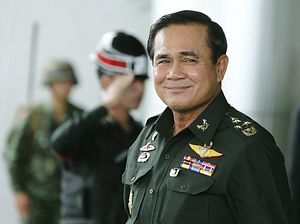Last week, Thailand officially commissioned four of its new South Korean trainer jets. The move marks further progress for a key item within Thailand’s border air force modernization despite continuing challenges.
As I have noted before, starting in 2015, under the junta government led by Prime Minister Prayut Chan-o-cha, the Royal Thai Air Force (RTAF) had begun moving forward with the purchase of T-50 Golden Eagle lead-in fighter trainers with South Korean aircraft manufacturer Korea Aerospace Industries (KAI). Since then, several things, including the public rationalizations for the purchase, number of aircraft, and delivery timelines, had been evolving over time amid broader considerations (See: “The Truth About Thailand’s Defense Budget Hike”).
The two orders Thailand had confirmed were for four T-50TH jets ordered in 2015 for around $110 million and a separate 2017 order for eight T-50TH aircraft for $2.6 billion. The eight aircraft from the 2017 order were to be delivered by 2020, starting from late 2019, while the four aircraft from the 2015 order had been delivered starting earlier this year from January to March (See: “Thailand Gets Its First New South Korea Fighter Jets”).
On April 5, KAI announced that the RTAF had officially commissioned four of the T-50TH jet trainers into the service. According to KAI, the commissioning ceremony was held at Tarkly Air Base on April 4, and it was attended by KAI CEO Kim Jowon, Korean Ambassador to Thailand Noh Gwang-il, Air Chief Marshal Johm Rungswang and other 50 commanders from Thailand, including Nakonsawan Governor Thanakom Jongjira and Chainat Governor Ronnaphob Laengphiroj.
Few additional details were offered by KAI, besides noting its appreciation to the RTAF for supporting the delivery of the aircraft and restating projected delivery timelines for the remaining aircraft. Yet there is little question that though challenges remain, the commissioning also marks incremental progress for both sides – for Thailand given its urgent modernization needs, which remain far from fulfilled, and for KAI given its growing involvement in the past few years in key Southeast Asian markets such as Thailand, the Philippines, and Indonesia.
































